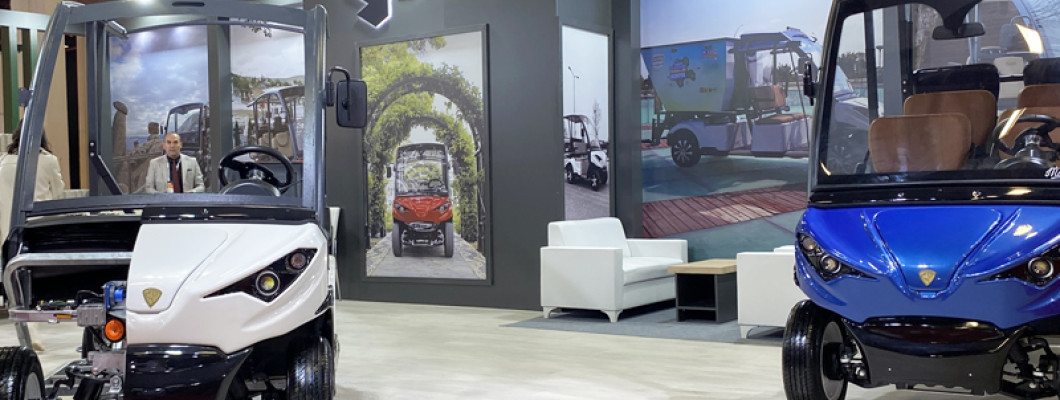
Golf Arabalarında LiFePO4 ve AGM Batarya Seçenekleri
Arasındaki Farklar
Elektrikli golf arabalarının performansını ve kullanım
süresini belirleyen en önemli bileşenlerden biri bataryadır. Golf arabalarında
kullanılan iki popüler batarya türü LiFePO4 (Lityum Demir Fosfat) ve AGM
(Absorbent Glass Mat) bataryalar, farklı ihtiyaçlara ve bütçelere hitap
eder. Mastiff elektrikli golf arabaları, bu iki batarya seçeneğini
kullanıcılarına sunarak performans, dayanıklılık ve maliyet açısından esnek
çözümler sağlar.
LiFePO4 Bataryalar (Lityum Demir Fosfat)
- Dayanıklılık
ve Uzun Ömür
- Ömür:
LiFePO4 bataryalar, AGM bataryalara kıyasla daha uzun ömürlüdür. Ortalama
5000 şarj döngüsü sunar.
- Dayanıklılık:
Derin deşarj döngülerine dayanıklıdır ve uzun süre yüksek performans
sağlar.
- Hızlı
Şarj ve Enerji Verimliliği
- Hızlı
şarj: LiFePO4 bataryalar, kısa sürede tam şarj edilebilir.
- Daha
fazla verimlilik: Enerjiyi daha verimli bir şekilde kullanır, bu da
golf arabasının menzilini artırır.
- Hafif
ve Kompakt Tasarım
- Ağırlık:
AGM bataryalara göre çok daha hafif olduğundan, aracın toplam ağırlığını
düşürür ve enerji tasarrufu sağlar.
- Kompakt
yapı: Daha küçük bir tasarımla daha fazla enerji depolayabilir.
- Yüksek
Güvenlik
- Isınmaya
dayanıklılık: LiFePO4 bataryalar, aşırı ısınma ve termal kaçaklara
karşı dayanıklıdır.
- Uzun
süre kullanılabilirlik: Yüksek güvenliğiyle düşük risk sunar.
- Fiyat
- LiFePO4
bataryalar, daha uzun ömürlü ve yüksek performanslı olduğu için başlangıç
maliyeti daha yüksektir. Ancak uzun vadede daha ekonomik bir seçenektir.
AGM Bataryalar (Absorbent Glass Mat)
- Ekonomik
ve Kullanıcı Dostu
- Fiyat:
AGM bataryalar, başlangıç maliyeti düşük olduğu için bütçe dostu bir
seçenektir.
- Bakım
gerektirmez: AGM bataryalar kapalı bir yapıya sahiptir ve sıvı
eklenmesine gerek yoktur.
- Güçlü
Performans
- Kısa
vadeli kullanım: Düşük-orta yoğunluklu kullanım için idealdir.
- Ağır
ve Daha Büyük Yapı
- Ağırlık:
AGM bataryalar, LiFePO4 bataryalara göre daha ağırdır, bu da aracın toplam
ağırlığını artırabilir.
- Daha
az enerji yoğunluğu: Aynı enerji miktarını depolamak için daha fazla
yer kaplar.
- Şarj
Süresi ve Ömür
- Daha
uzun şarj süresi: AGM bataryalar, LiFePO4’e kıyasla daha uzun sürede
şarj olur.
- Daha
kısa ömür: Ortalama 500-1000 şarj döngüsü sunar, bu da daha sık
batarya değişimi anlamına gelir.
LiFePO4 ve AGM Bataryaların Karşılaştırması
|
Özellik |
LiFePO4 Batarya |
AGM Batarya |
|
Ömür |
5000 şarj döngüsü |
500-1000 şarj döngüsü |
|
Şarj Süresi |
Hızlı şarj |
Daha uzun şarj süresi |
|
Ağırlık |
Hafif |
Daha ağır |
|
Fiyat |
Daha yüksek başlangıç maliyeti |
Daha düşük başlangıç maliyeti |
|
Verimlilik |
Daha verimli, uzun menzil |
Orta seviyede verim |
|
Bakım |
Gerektirmez |
Gerektirmez |
|
Uygunluk |
Yoğun ve uzun vadeli kullanım |
Daha kısa vadeli ve düşük yoğunluklu kullanım |
Mastiff Golf Arabalarında Batarya Seçimi
- LiFePO4
Bataryalar Kimler İçin Uygun?
- Yoğun
kullanım: Sürekli çalışması gereken oteller, tatil köyleri ve
endüstriyel alanlar için idealdir.
- Uzun
menzil ihtiyacı: Daha fazla mesafe kat etmesi gereken kullanıcılar
için önerilir.
- Yatırım
odaklı kullanıcılar: Uzun vadede tasarruf etmek isteyenler için
uygundur.
- AGM
Bataryalar Kimler İçin Uygun?
- Düşük
yoğunluklu kullanım: Bireysel kullanıcılar ve kısa mesafeli taşıma
ihtiyacı olanlar için idealdir.
- Ekonomik
çözüm arayanlar: Başlangıç maliyetini düşük tutmak isteyen
kullanıcılar için uygundur.
Sonuç
Golf arabaları için batarya seçimi, kullanım amacına ve
bütçeye göre değişiklik gösterir. LiFePO4 bataryalar, uzun ömürlü ve
yüksek performanslı bir çözüm sunarken, AGM bataryalar ekonomik bir
başlangıç seçeneği olarak öne çıkar. Mastiff elektrikli golf arabaları,
her iki batarya türünü de kullanıcıların ihtiyaçlarına göre sunarak esnek ve
verimli bir taşıma deneyimi sağlar.
Eğer golf arabanız için doğru bataryayı seçmek istiyorsanız,
Mastiff’in batarya seçeneklerini inceleyin ve ihtiyacınıza en uygun çözümü
bulun!
